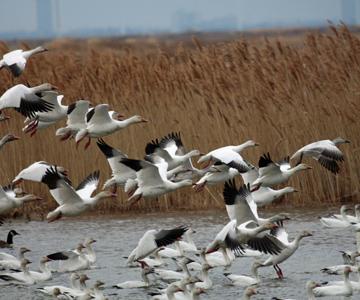Oklahoma’s Road to Water Quality Standards for Wetlands
 Oklahoma’s Water Quality Standards (OWQS) have always contained language that differentiates between bodies of water like “lakes” and “streams”. Currently not addressed in any form in the OWQS are wetlands and, as a result, they assume the primary default beneficial uses of the Warm Water Aquatic Community and Primary Body Contact Recreation. However, we know that many times wetlands in fact are not a part of primary body contact recreation. The criteria associated with these particular uses are frequently not applicable in a wetland setting, considering the natural conditions in many wetlands are much better for other types of recreation and secondary contact. As OWQS continue to evolve to support changes in development, population and environmental issues, wetlands need highlighting as a separate waterbody type with its own beneficial uses, criteria and anti-degradation language specific to them.
Oklahoma’s Water Quality Standards (OWQS) have always contained language that differentiates between bodies of water like “lakes” and “streams”. Currently not addressed in any form in the OWQS are wetlands and, as a result, they assume the primary default beneficial uses of the Warm Water Aquatic Community and Primary Body Contact Recreation. However, we know that many times wetlands in fact are not a part of primary body contact recreation. The criteria associated with these particular uses are frequently not applicable in a wetland setting, considering the natural conditions in many wetlands are much better for other types of recreation and secondary contact. As OWQS continue to evolve to support changes in development, population and environmental issues, wetlands need highlighting as a separate waterbody type with its own beneficial uses, criteria and anti-degradation language specific to them.
The Oklahoma Water Resources Board is the agency responsible for setting water quality standards in the state of Oklahoma. They work very closely with different stakeholders, EPA Region 6 and the Army Corps of Engineers, to develop a proposal for wetland-specific Water Quality Standards. The Oklahoma Conservation Commission (OCC) is the lead agency for developing the states Wetland Program Plan (WPP), completed in 2013. The Oklahoma WPP outlined priority actions that include developing WQS for wetlands. Therefore, the OCC is currently working to develop a rapid assessment method that would determine the condition of wetlands in the state and thus create criteria for wetland-specific WQS. This will also aid the state in implementing a more effective approach to their Clean Water Act section 401 certification responsibilities and state-led voluntary restoration.
Oklahoma may not have completely met their goals of wetland-specific Water Quality Standards but they are not letting that deter them. They hope that one day in the near future they can be leading states and tribes across the U.S. as an exemplary effort for Water Quality Standards.
Read about wetlands protection in the state of Oklahoma.Exit
